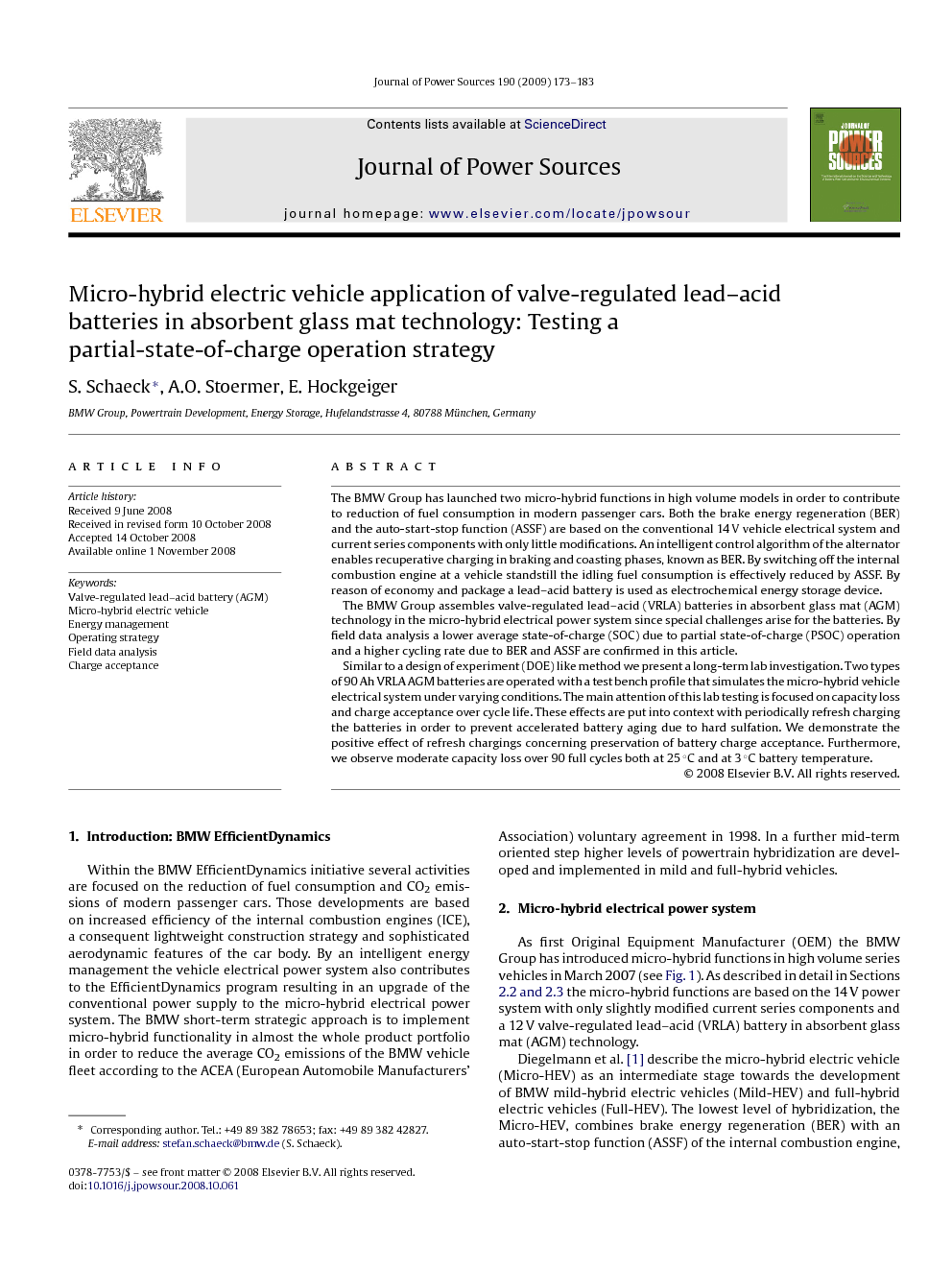ترجمه فارسی عنوان مقاله
بکارگیری وسیله نقلیه الکتریکی میکرو هیبریدی از باتری های اسید سرب دریچه تنظیم در جذب فن آوری حصیر شیشه ای: تست یک استراتژی پیشرفته از عملیات
عنوان انگلیسی
Micro-hybrid electric vehicle application of valve-regulated lead–acid batteries in absorbent glass mat technology: Testing a partial-state-of-charge operation strategy
| کد مقاله | سال انتشار | تعداد صفحات مقاله انگلیسی |
|---|---|---|
| 11752 | 2009 | 11 صفحه PDF |
منبع

Publisher : Elsevier - Science Direct (الزویر - ساینس دایرکت)
Journal : Journal of Power Sources, Volume 190, Issue 1, 1 May 2009, Pages 173–183
ترجمه کلمات کلیدی
() - باتری دریچه تنظیم اسید سرب () - میکرو هیبرید خودرو برق - مدیریت انرژی - استراتژی های عامل - تجزیه و تحلیل درست داده ها - پذیرش شارژ -
کلمات کلیدی انگلیسی
Valve-regulated lead–acid battery (AGM),Micro-hybrid electric vehicle,Energy management,Operating strategy,Field data analysis,Charge acceptance,
ترجمه چکیده
Introductory, the BMW micro-hybrid functions BER and ASSF were described. The emerging challenges for the battery were discussed by means of first field experience. The field data, acquired by the method of after sales analysis, revealed higher cycling rates and lowered SOC distribution on average. Under those conditions and due to the fact that maximum charge acceptance is required for regenerative braking, VRLA batteries in AGM technology promise best performance on request of package and price. Since battery behavior with a PSOC operation strategy in high-volume series applications is widely unknown, we designed a long-term lab investigation under preferably realistic and controllable conditions. We conclude that AGM batteries of both measured types are suitable for the use at least in mid-sized Micro-HEVs. Especially, we demonstrated that periodically recharging of the battery improves charge acceptance significantly. This battery refresh prevents Pb sulfate crystals to grow irreversibly especially in the negative plate as intensely discussed in literature. The maximum capacity loss would account for 30% after 90 full cycles (i.e. about 60,000 km mileage or 4 years) at an average temperature of 25 °C. Note, that the C20 measurement plus recharging recovers the battery to some extent as well. The stage of development of the tested batteries was at the beginning of the year 2006.

